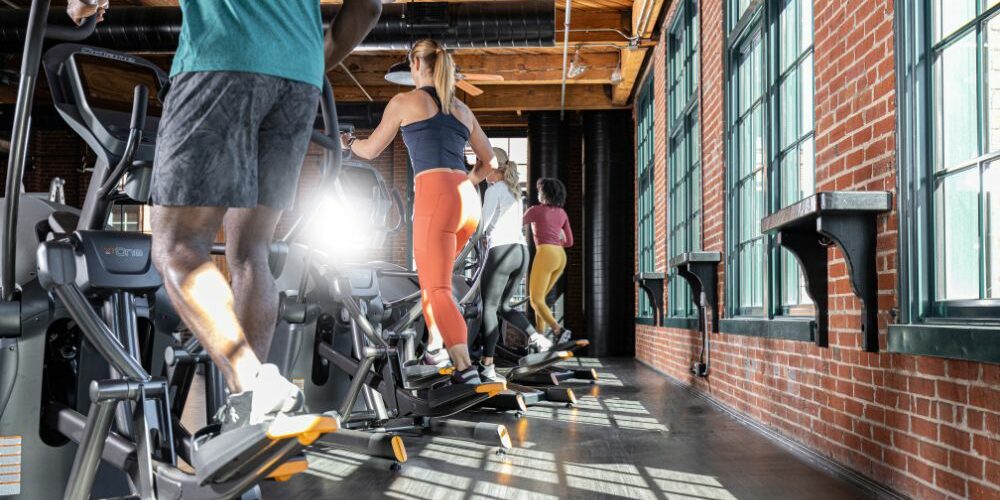In cardiovascular training and strength building, the elliptical machine stands as a cornerstone of gym equipment. These cardio trainers provide a low-impact workout that appeals to and benefits many gym-goers. Like other fitness equipment, ellipticals come in many forms, providing variations of its signature training.
Lateral vs. traditional ellipticals provide unique workout experiences shaped by their distinct motion paths, offering different benefits. So, which elliptical should you add to your gym? Compare the two types to determine which machine best suits your gym’s needs.
Traditional Elliptical: Tried and True
The traditional elliptical, also known as a front-drive or rear-drive elliptical, has been a staple in gyms and homes for years. It provides a low-impact, total-body workout that’s great for everyone, from beginners to fitness veterans. The motion mimics walking or running with the added benefit of arm handles for upper-body engagement. Traditional ellipticals offer a straightforward, easy-to-use approach to cardio.
Lateral Elliptical: A New Twist on Cardio
Lateral ellipticals are a more recent addition to the fitness market. They take the low-impact benefits of traditional ellipticals and incorporate side-to-side movement. This lateral motion targets additional muscle groups, particularly in the hips and outer thighs, fostering improved balance and coordination. Lateral trainers provide a challenging variant of the standard elliptical workout.
Comparing the Benefits
Lateral and traditional ellipticals are highly effective cardiovascular training and strength-building tools. They promote good posture, balance, and mobility, strengthening the core over time.
Both lateral and traditional ellipticals offer excellent cardiovascular workouts, but their unique features cater to different needs. Traditional ellipticals are perfect for those seeking a simple, effective total-body workout. With its side-to-side movement, the lateral elliptical offers a more unique challenge and targets often neglected muscle groups, including the gluteus medius and minimus, hip abductors, and the tensor fasciae latae.
The Verdict: Which To Add to Your Gym
When deciding between the two options, consider the clientele of your gym. If your gym caters to a wide range of skill levels, a traditional elliptical may be the safer bet. Octane’s Pro310 is a traditional standing elliptical, providing a basic elliptical workout suitable for various users.
However, if your clients seek innovative workout options and enjoy a challenge, a lateral elliptical could be a compelling addition. They especially appeal to experienced gym-goers who wish to avoid the monotony of traditional cardiovascular routines. Octane’s commercial lateral trainer, the LateralX, offers unique cardio training capabilities through advanced biomechanics engineering that mimics the body’s natural path of motion.
Choosing which elliptical you should add to your gym between a lateral vs. traditional elliptical depends on your gym’s and client’s needs. Both options offer unique ways to enhance cardiovascular fitness and overall strength. No matter your decision, Octane Fitness offers traditional and lateral ellipticals that can enhance your gym, appeal to various clients, and elevate cardio training. Contact an Octane representative today!
